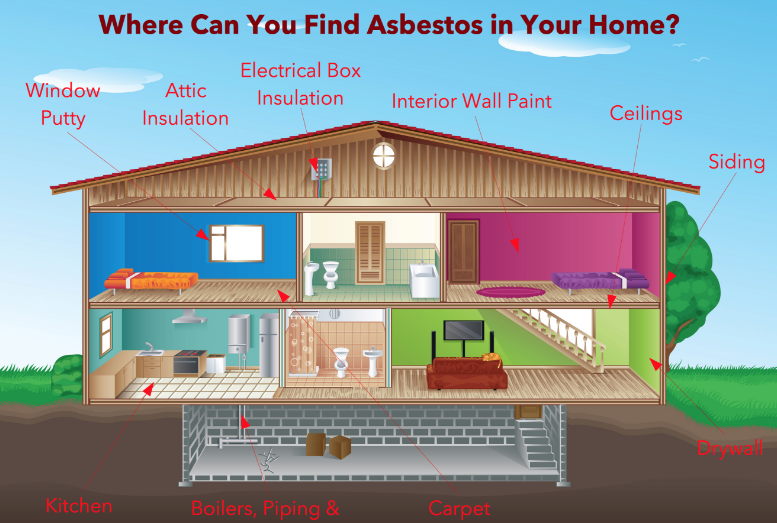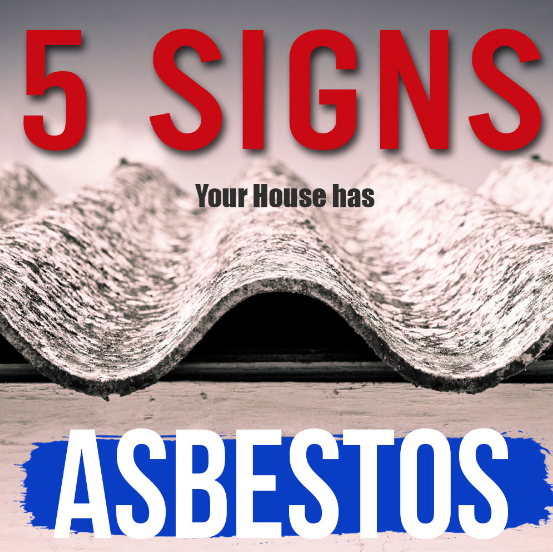Asbestos is a natural mineral found on the earth’s surface and contains very durable, fire-resistant and insulating solid fibers. Asbestos fibers are fifty or two hundred times thinner than human hair, can float in the air for a long time, be unseen and breathe in into the lungs. Recent health proof indicates that the mere fact of living in a house containing asbestos is not risky provided that the asbestos is not broken or disturbed. It can be difficult to determine if your home contains asbestos-containing materials just by looking. To help you identify products containing asbestos, asbestos fibers can be firmly linked to a series of products formerly used in the construction industry.
There is no reason to panic if you think there is asbestos in your home, Asbestos waste removal is available for you. The main hazard of asbestos lies in its handling. When asbestos is cut, punctured, broken or altered, it releases particles. These particles suspended in the air add up to the real danger in asbestos. Without being disturbed, it is not dangerous. Today, most products are not made with asbestos, although in the earlier period asbestos was an important production material. All products created with asbestos-based materials must be labeled as such. It has built a lot of properties with asbestos, in particular for insulation purposes.

Where Can I Find Asbestos And When Can It Be A Problem?
At home, asbestos can be present in your home in many places. Asbestos in bulk can be present in the insulation of a home. This would be particularly unsafe because it can be easily disturbed. In general, the existence of materials containing asbestos is not a reason for fear and can leave the materials in place. For example, if the inner walls of the asbestos cement sheet are in good condition and covered with paint, they pose no health jeopardy. It is not necessary to replace asbestos ceilings and roofs except they are wrecked or the surfaces are damaged. Asbestos and cement building products can be maintained, disposed of safely, provided certain precautions are taken to avoid the discharge of asbestos fibers or dust.
Materials that may have asbestos fibers include:
Cement, paper and cardboard sheets used for insulation around wood stoves and ovens
Steam ducts, furnace ducts and boilers isolated with asbestos paper tape blankets
Door seals in ovens and stoves with coal or wood
Tiles, adhesives and strong backing on vinyl sheet flooring
Compounds of stamps and patches for ceilings, walls and textured paints
Decorative or soundproofing materials that have been sprayed on ceilings and walls
Brake pads and coatings for automobiles, gaskets and clutch linings
Ashes and ashes used in gas fireplaces
Ironing board covers, Fire resistant old gloves, stove coverings and some hair dryers
Ceiling, siding, and tiles

What to do with asbestos at home?
If you think your home may contain asbestos, you should ask a health inspector to come to your home. Most asbestos removal companies will provide a free asbestos test to resolve the risks involved. Once the investigation is completed, the inspector will indicate which materials in your home contain toxins that cause asbestos cancer, and then explain the best methods to eliminate them. The most common is that houses that contain asbestos have it in their insulation, roof or walls. If the asbestos is not altered, the inspector may advise leaving it intact. If the inspector determines that the materials have been damaged, they will indicate the elimination. Damaged materials can release particles in the air and, as a result, inhale, pose serious health risks.